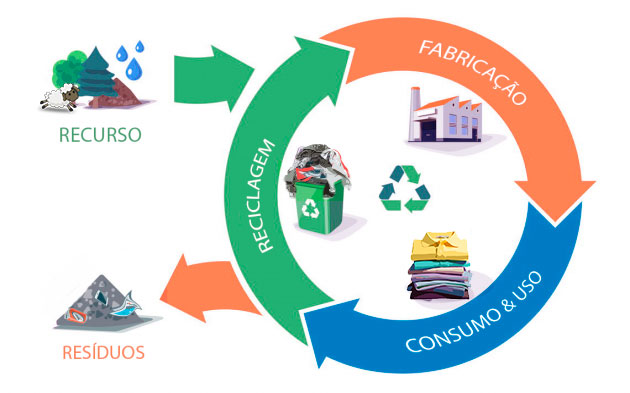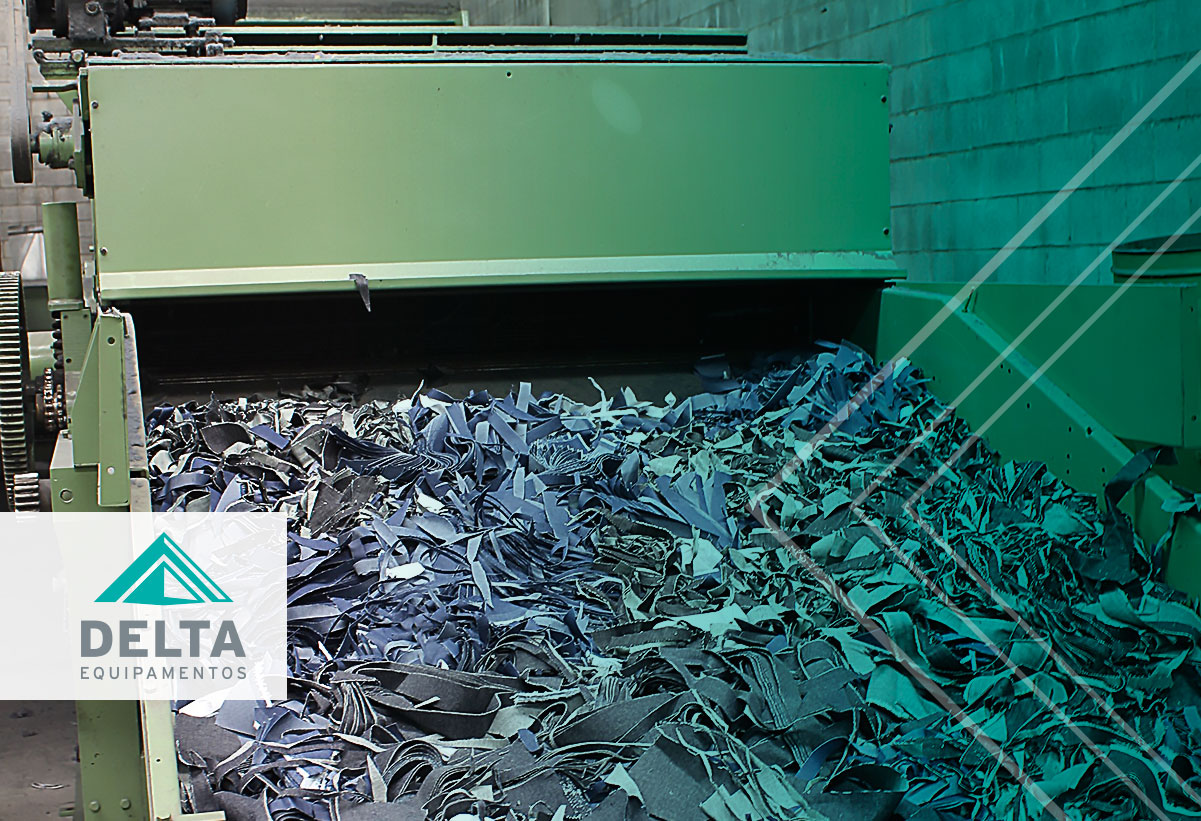If you’re interested in sustainability, know that a concept that has gained prominence in recent years is the circular economy.
It goes beyond recycling and reusing discarded materials and brings about more impactful changes in consumption patterns and society as a whole, generating savings while preserving the environment.
To better understand the topic and how it applies to the textile sector, keep reading!
The concept of circular economy
Currently, production is based on a linear cycle in which raw materials are transformed into products, marketed, and then discarded.
In this system, growth relies on the continuous use of new resources, which is problematic since the depletion of raw materials is imminent.
Moreover, the contamination generated during production and disposal of products is also toxic to both humans and the planet.

The circular economy emerges with the purpose of addressing such problems and finding smarter solutions to continue producing and consuming but in a more sustainable manner.
In the circular economy, there are no ways of managing waste from production and consumption. In it, products are manufactured to be reused in cyclical flows, so much so that the trajectory is called Cradle to Cradle (from cradle to cradle).
Products that are biodegradable (such as food) can be produced in packaging that is also biodegradable and in a way that is non-toxic. Thus, they return to the soil and become nutrients instead of poison for the planet.
Products that are not biodegradable, in the circular economy, can return to the manufacturer to be dismantled and regenerated to be used again.
There’s also the proposition to manufacture products in a way that their technical materials can be reused, and the biological components can enrich the soil.
Another option is technology sharing, where products are leased from manufacturers rather than being purchased. If you’ve seen bike-sharing and even umbrella-sharing in major cities, know that they can be considered advancements in adopting this type of system.
Application and Benefits for the Textile Industry
The impact of the textile industry on the environment is significant. Approximately 93 quadrillion liters of water are consumed annually, not to mention the production of greenhouse gases reaching an impressive 1.2 billion tons. There are also plastic microfibers released during clothes washing that end up in the oceans.
Among the main causes are the rapid disposal of clothes, low recycling rates, and insufficient use. People enjoy constantly updating their wardrobes, and very few pieces are recycled afterward, which becomes a problem in a linear economy.
One of the strategies that can be adopted is the concept of a service product. A company that manufactures baby or maternity clothes, for example, can lease them instead of selling them. In addition to making the price more accessible to consumers, it ensures that the clothes will be used more times before reaching the end of their lifespan.

Something very similar already happens when you rent attire for graduations and weddings. Considering that many people acquire new pieces just to keep up with current fashion trends, this solution would have significant impacts.
Regarding the low rate of recycling and reusing materials—another problematic aspect of the current model—it’s possible to produce items with materials that can be recycled with the same initial quality. However, for this to be effective, the right materials need to be adopted.
An example of a strategy that didn’t work because it didn’t fit well into the circular economy was the production of T-shirts from PET bottles. After reuse, neither the cotton nor the plastic can be repurposed for any other use or become biodegradable.
As a result, the solution doesn’t fit into the concept of constant transformation of textiles. To prevent cases like these from happening, collaborative work between designers, suppliers, and brands is essential, along with significant investment in research and technologies, as you can see in these 5 examples of initiatives aiming to promote the circular economy.
+Learn more: Upcycling: what it is and its impact on the future of production
The Importance of Companies Adapting to Updates in the Industry
With the implementation of Industry 4.0 becoming increasingly real, it’s time for textile manufacturers and factories to understand the importance of adopting new technologies, or they risk becoming outdated.
All these transformations bring benefits not only to consumers and the environment but also make the production process more efficient and profitable. Moreover, there’s the fact that millennials are concerned about consuming sustainable products from brands that are truly sustainable in practice, not just in words.
It’s no wonder that major media outlets are alerting to these facts, as you can see in the translation of this article from The Guardian. Technology is an ally, everyone wins in the end.
If you are interested in this topic and want to know more, check out why companies in the textile sector need to adapt to industry 4.0!




